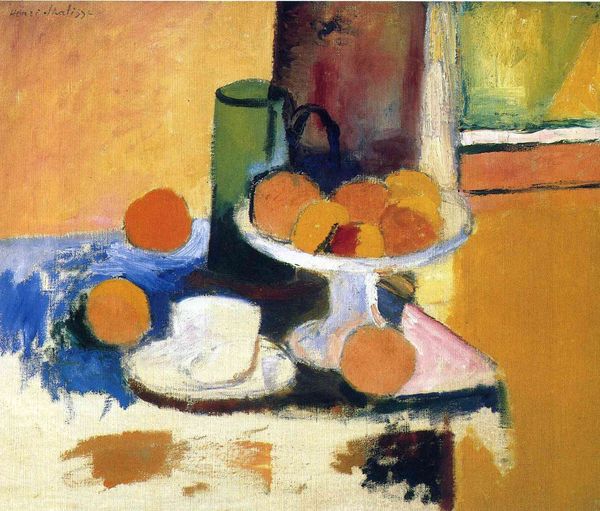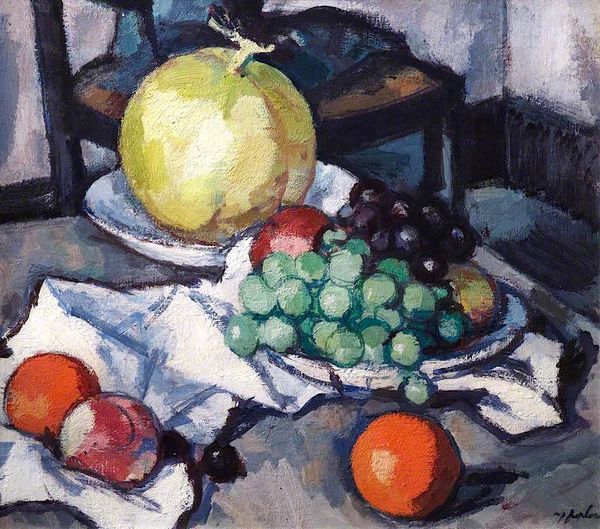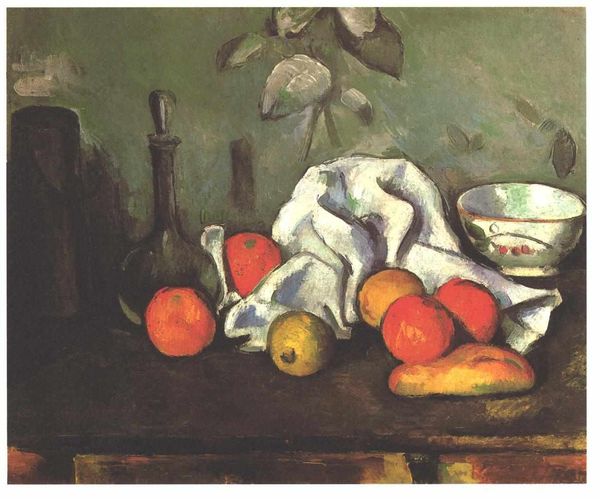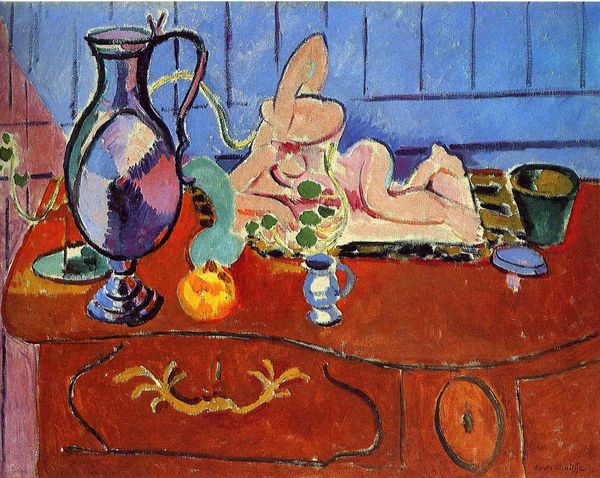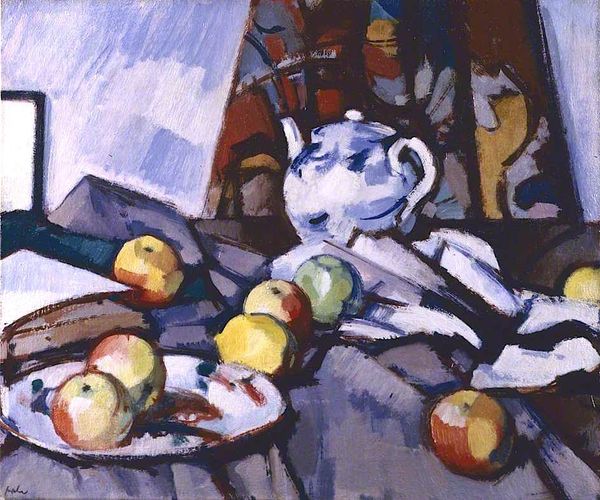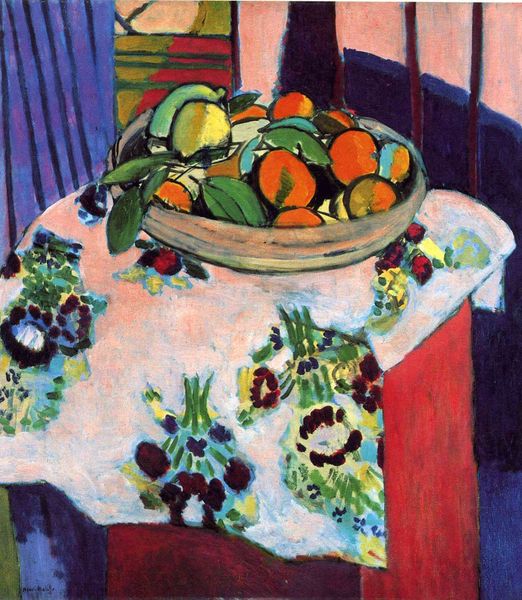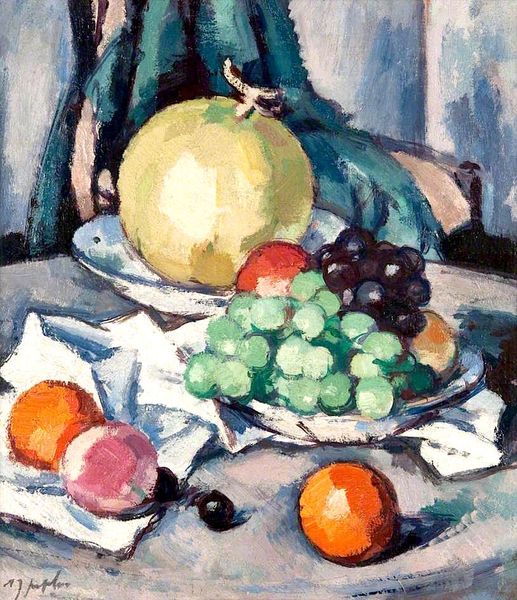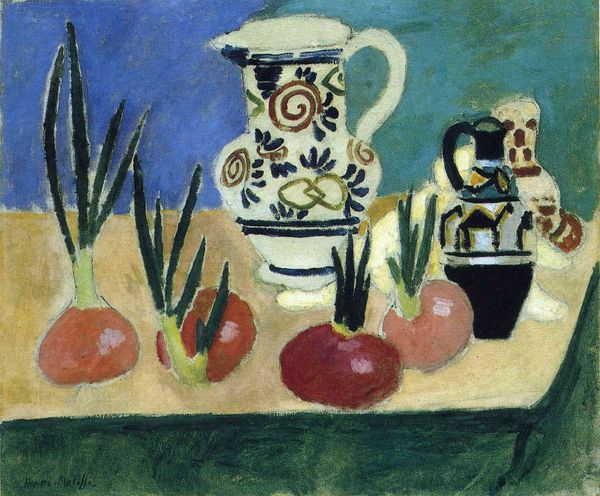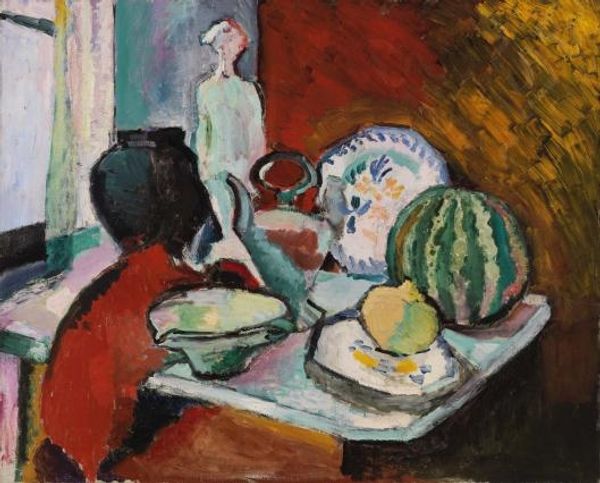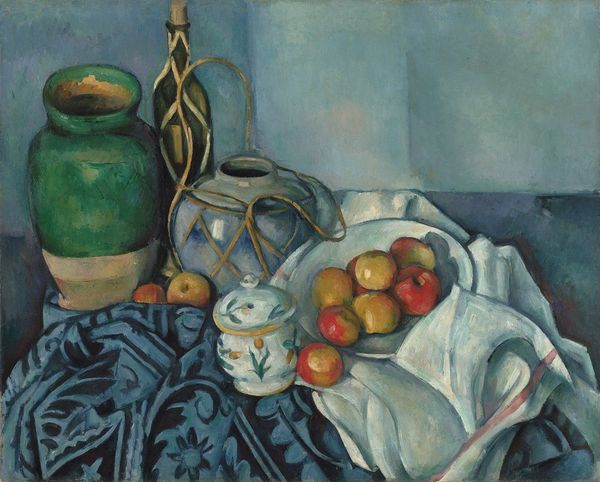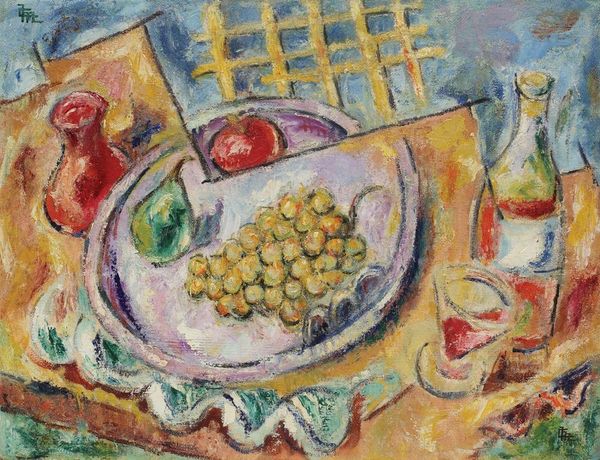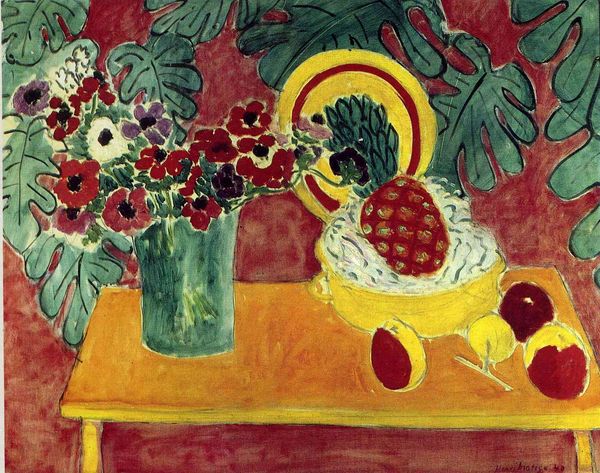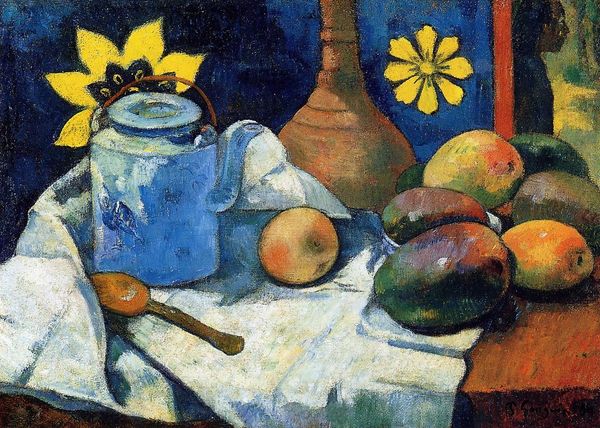
Dimensions: 94 x 112 cm
Copyright: Pyotr Konchalovsky,Fair Use
Curator: Pyotr Konchalovsky's 1929 painting, "Balaklava. The window. (The grapes on the table)." It’s an oil-on-canvas that offers an intimate still life against a vibrant coastal view. Editor: My immediate reaction is a sense of sun-drenched serenity. The blues of the water juxtaposed with the yellows and reds of the still life on the table... it’s inviting and comforting, despite the somewhat clunky brushwork. Curator: Absolutely. The window, more like a proscenium, frames the scene within the socio-political realities of the time. The rise of tourism in the Crimean Peninsula offered leisure, reflected in the landscape, for some sections of soviet society. We can interpret the art as a visual echo of those societal shifts. Editor: It's fascinating how the materiality echoes this narrative, isn't it? Look at the way Konchalovsky applies paint. Thick, almost crude in places. The labor is visible, celebrating a connection between art and tangible effort that aligns with early Soviet ideals, despite the Impressionistic influence. Curator: Precisely. It's an artistic rendering embedded in a socio-political framework. The composition directs the eye—from domestic space to the openness of the sea— mirroring Russia’s internal focus transitioning to international outlook. Consider the rise of port cities. Editor: And that simple, rustic basket…it speaks to local craftsmanship, local material culture, resisting complete industrialization, maybe. It isn't just pretty fruit; it reflects an entire localized industry and society’s resources during that time. Curator: That’s an interesting point, but I wouldn’t want us to see that basket romanticize the rural sector. But how did society value artists like Konchalovsky within its Constructivist and Productivist movements of the late 20s? Were they celebrating the proletariat? Or still too bourgeois? Editor: It certainly provides plenty of questions about labor and visibility, doesn’t it? Curator: Indeed, and about the enduring appeal of art amidst evolving societal structures. Editor: Thanks. I am newly thinking of art as labor.
Comments
No comments
Be the first to comment and join the conversation on the ultimate creative platform.
